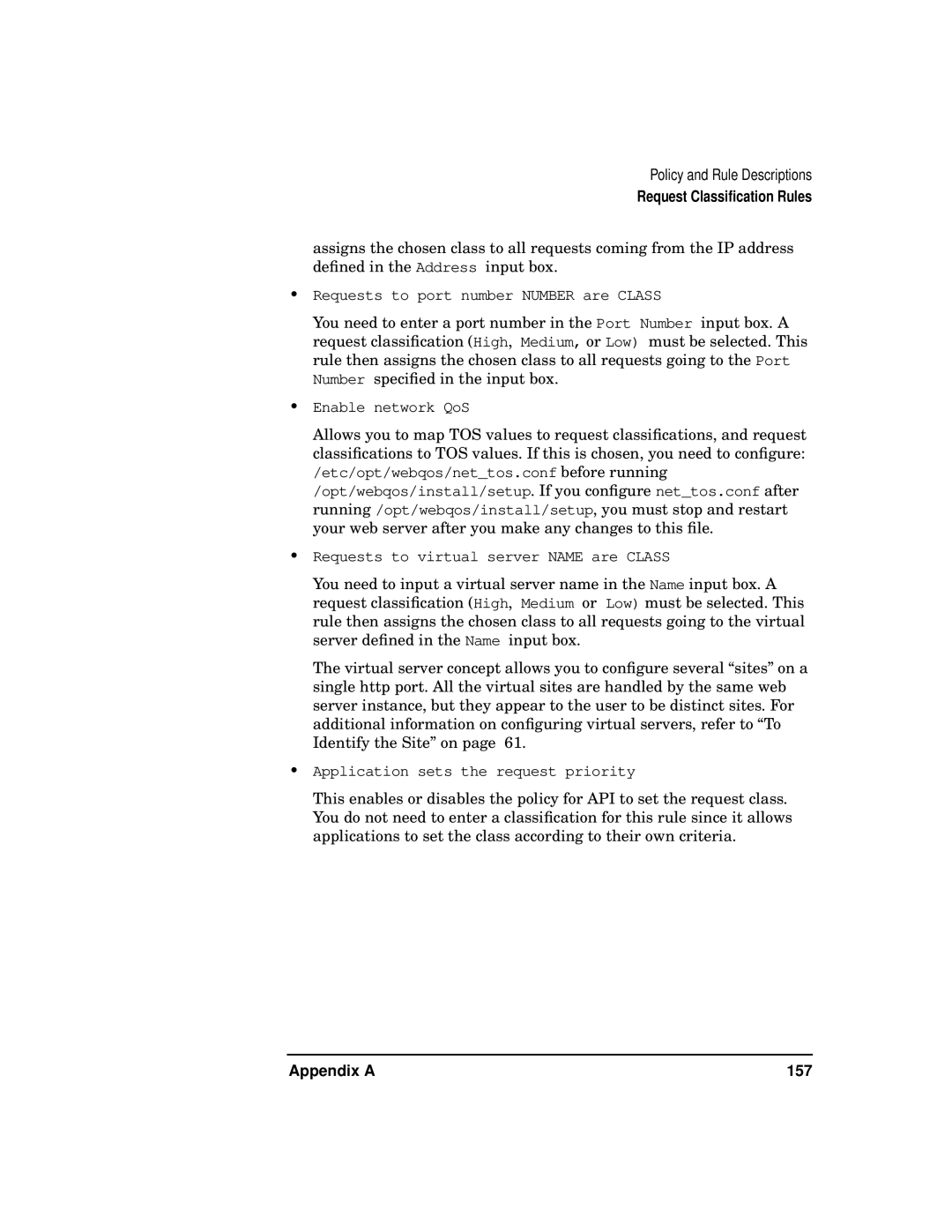Policy and Rule Descriptions
Request Classification Rules
assigns the chosen class to all requests coming from the IP address defined in the Address input box.
•Requests to port number NUMBER are CLASS
You need to enter a port number in the Port Number input box. A request classification (High, Medium, or Low) must be selected. This rule then assigns the chosen class to all requests going to the Port Number specified in the input box.
•Enable network QoS
Allows you to map TOS values to request classifications, and request classifications to TOS values. If this is chosen, you need to configure:
/etc/opt/webqos/net_tos.conf before running /opt/webqos/install/setup. If you configure net_tos.conf after running /opt/webqos/install/setup, you must stop and restart your web server after you make any changes to this file.
•Requests to virtual server NAME are CLASS
You need to input a virtual server name in the Name input box. A request classification (High, Medium or Low) must be selected. This rule then assigns the chosen class to all requests going to the virtual server defined in the Name input box.
The virtual server concept allows you to configure several “sites” on a single http port. All the virtual sites are handled by the same web server instance, but they appear to the user to be distinct sites. For additional information on configuring virtual servers, refer to “To Identify the Site” on page 61.
•Application sets the request priority
This enables or disables the policy for API to set the request class. You do not need to enter a classification for this rule since it allows applications to set the class according to their own criteria.
Appendix A | 157 |
